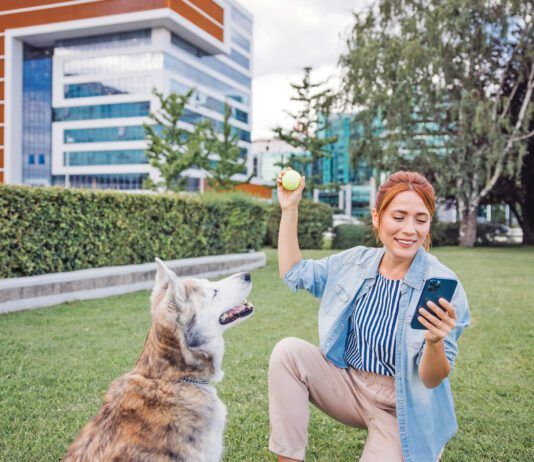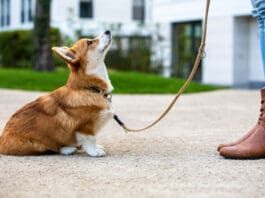How to Train Your Dog for Off-Leash Walks
Taking a dog for a walk or hike off-leash must be done appropriately and legally in order to prevent any number of risks to the dog, other dogs, or humans who may encounter the off-leash dog, as well as livestock or wildlife in the area. Off-leash dogs may run off and get lost, run onto roads and cause serious accidents, cause hikers to fall and bicyclists to crash, and chase or even kill other animals.
The 7 Habits of Highly Effective Dog Owners
but finds it even more rewarding to teach their owners how to build a better relationship with their canine family members
How to Stop a Dog’s Unwanted Behavior in Five Steps
Most of the time, when dogs do something we don't want them to do (such as stealing our socks or jumping on our elderly...
How to Teach Your Dog to Just Walk Away!
Being able to teach your dog to move away from something when asked is an invaluable tool, both for your dog's safety and for your sanity. Note: Be sure to repeat each step eight to 12 (or more) times, until your dog eagerly responds to the cue before progressing to the next step.
How to Teach A Dog to “Leave It”
There are many times in your dog's life when she needs to be able to control her impulse to engage in a behavior. Last month, we discussed Wait" and "Stay" but impulse control goes far beyond these "don't move" cues. "Leave it" is another impulse-control behavior that is very useful for your dog to know. The cue means
Clicker Training for Dogs 101
If you use a clicker as your marker, you would create this association initially by clicking the clicker and then immediately feeding the dog a treat. You repeat this a number of times click, treat; click, treat; click, treat until your dog's eyes light up when she hears the click and she looks for the treat. We sometimes refer to this process as charging" the clicker; we've given the click significance
Your Dog’s Behavior: When to Manage, When to Train
How do I stop my dog from stealing food? How do I get my dog to stop drinking toilet water? Why does my dog run off all the time? These are just a few of the countless things dogs do that make their guardians run to professional trainers for help. The reality of dog behavior modification is that often the solution to a dog's bad habit is not through training the dog, but through carefully managing every opportunity the dog has to practice unwanted behaviors.
5 Essential Dog Training Supplies
You don't need to spend a lot of money on dog training supplies to be prepared to train your dog effectively. For most dogs, a well-fitted harness, comfortable flat-buckle collar, sturdy leash, and some tasty treats are all you will need to teach your dog to love training time! When dogs love their training, they learn behaviors quickly, and the best training never over-complicates things. Save your cash and time on fancy high-tech dog training gear and stick with Whole Dog Journal's 5 positive dog training gear essentials!
Best Types of Crates for Dog Training
Whole Dog Journal has written a lot in the past about the usefulness of having a comfortable crate your dog calls home. Crates are a convenient way to keep your dog out of harm's way, out of your way, and away from guests when necessary. A crate is regarded as the safest way to transport dogs in the car, and if you ever fly with your dog, you're going to need a crate for that too.
The 3 Reasons Dogs Ignore Our Cues
the dog may be unaware that his owner is even talking to him!üRe-teaching down
5 Professional Dog Training Tips
Yes, raising and training a puppy takes work, but it doesn't need to feel overwhelming at least, not the majority of the time! The more you know, the easier it gets. As I think about my own approach to raising and living with dogs, and that of many of my colleagues, I realize we engage in numerous behaviors that are extraordinarily helpful yet it's often difficult to get the pet owners we work for to try them! Don't resist! The following five tips can help you train like a pro.
Teach Your Dog to Fetch By Training Your Dog to Love Retrieval
we start with shaping that behavior and backchain to the completed "Fetch" behavior.üGradually
















